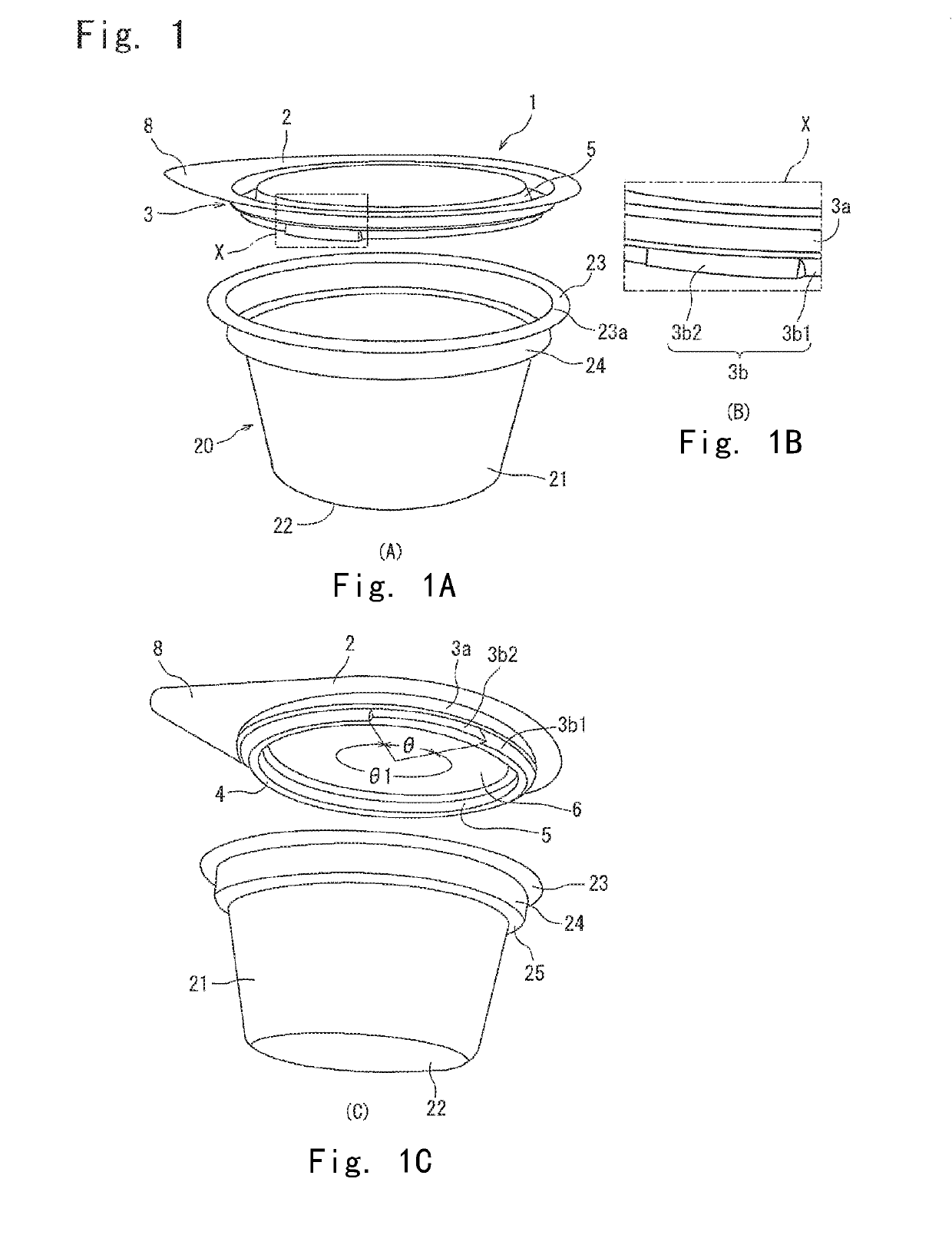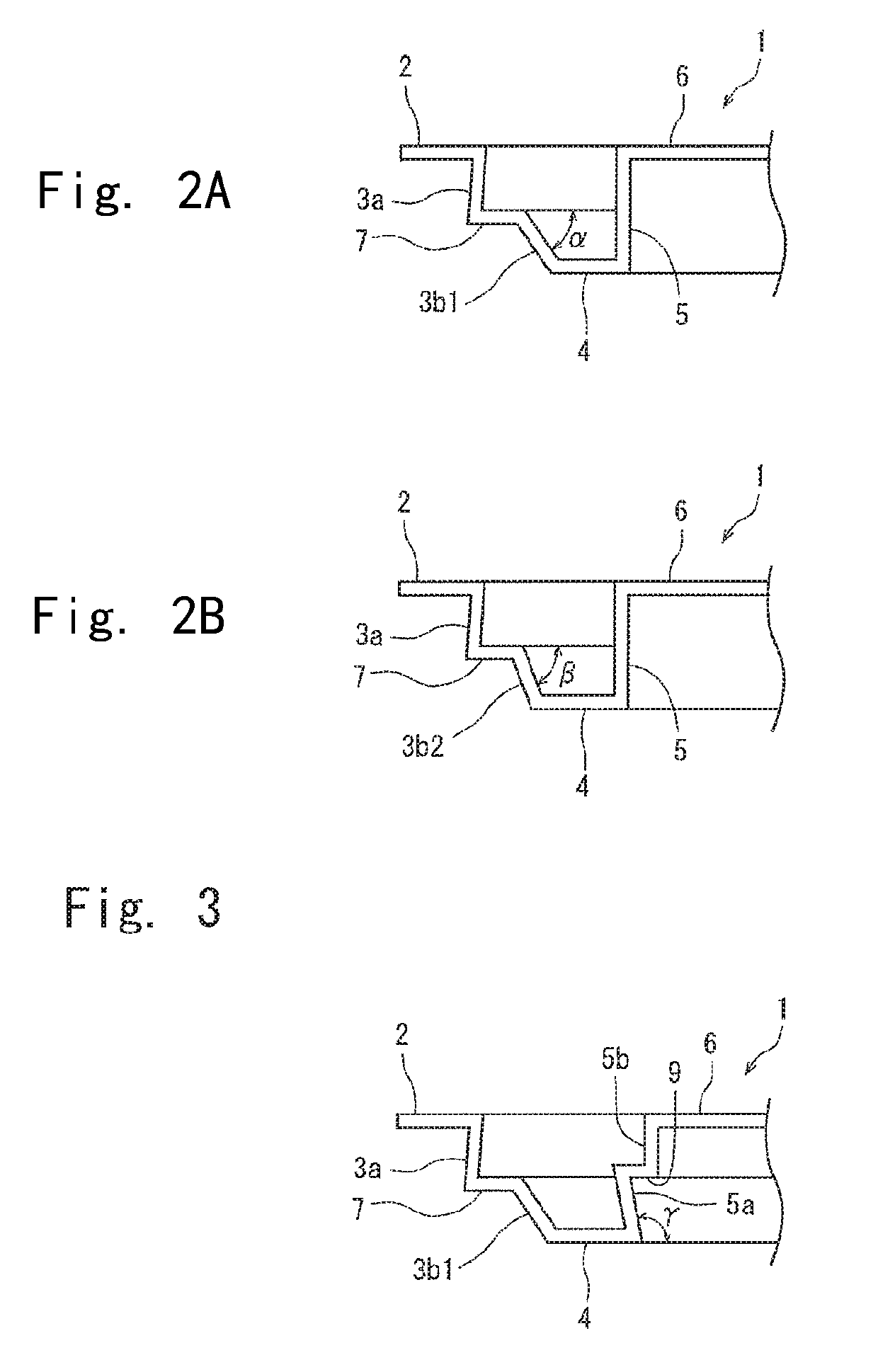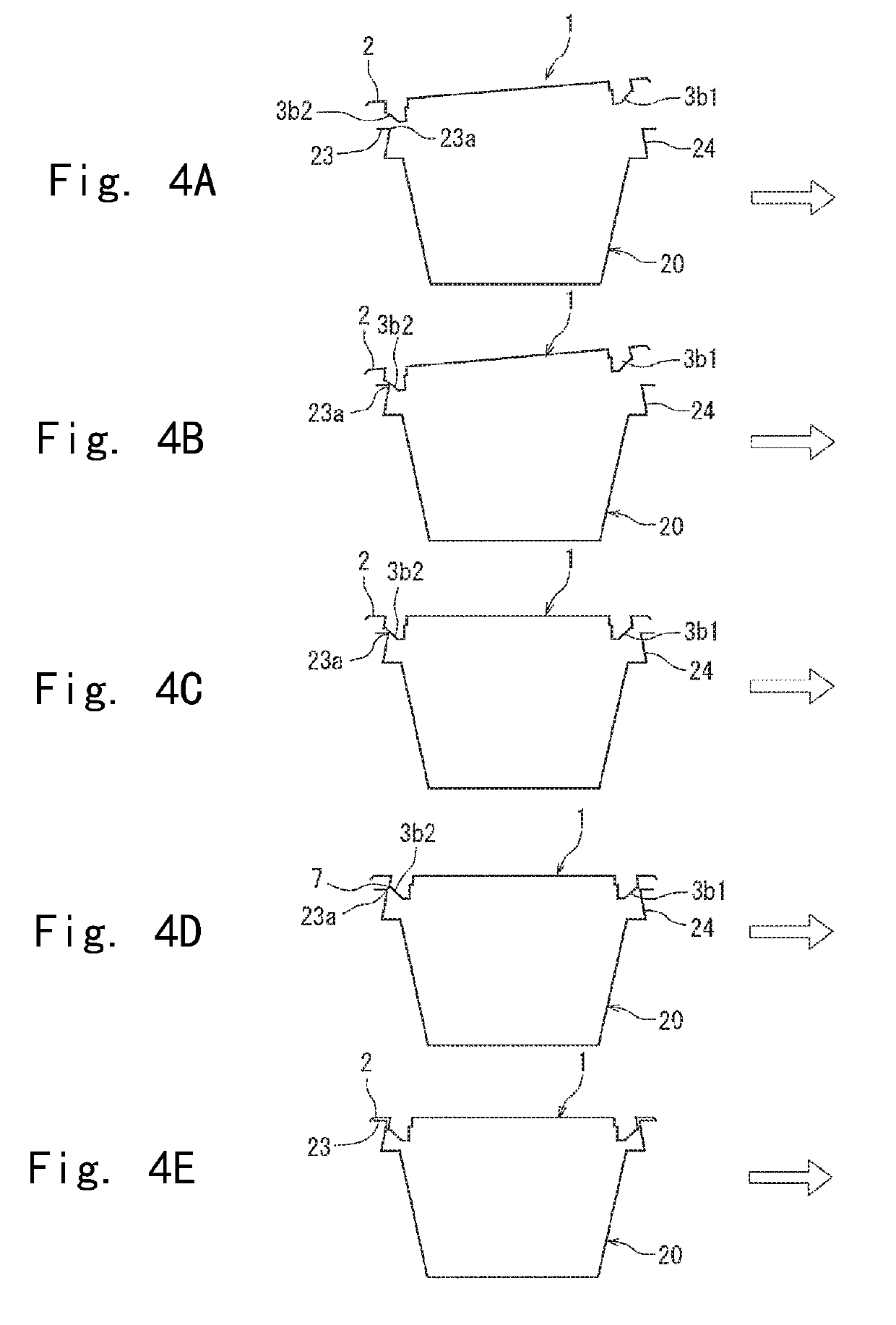Formed lid, method for fitting the lid to container, and sealing method
a technology of lids and containers, applied in the field of formed lids, can solve the problems of not being fully satisfactory in terms of productivity, taking time for heat fusion, and not being able to achieve the effect of fully satisfying the needs of consumers, accurate supply of containers, and reliably fitting containers
- Summary
- Abstract
- Description
- Claims
- Application Information
AI Technical Summary
Benefits of technology
Problems solved by technology
Method used
Image
Examples
Embodiment Construction
(Formed Lid)
[0030]A formed lid according to the present invention will be described using the accompanying drawings.
[0031]By reference to FIGS. 1A to 1C and FIGS. 2A, 2B, a formed lid 1 of the present invention is roughly composed of a flange section 2, an outer side wall section 3 suspending from the inner peripheral edge of the flange section 2, an annular section 4 extending horizontally and inwardly from the lower end of the outer side wall section 3, an inner side wall section 5 extending upwardly from the inner peripheral edge of the annular section 4, and a top panel 6 located horizontally and inwardly starting from the upper end of the inner side wall section 5. Partly in the flange section 2, a grip section 8 wider than other parts of the flange section 2 is formed. By holding the grip section 8 and pulling it upward, the formed lid 1 can be opened.
[0032]In the above-mentioned basic configuration of the formed lid according to the present invention, it is important for the ...
PUM
 Login to View More
Login to View More Abstract
Description
Claims
Application Information
 Login to View More
Login to View More - R&D
- Intellectual Property
- Life Sciences
- Materials
- Tech Scout
- Unparalleled Data Quality
- Higher Quality Content
- 60% Fewer Hallucinations
Browse by: Latest US Patents, China's latest patents, Technical Efficacy Thesaurus, Application Domain, Technology Topic, Popular Technical Reports.
© 2025 PatSnap. All rights reserved.Legal|Privacy policy|Modern Slavery Act Transparency Statement|Sitemap|About US| Contact US: help@patsnap.com



